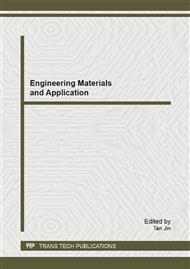p.401
p.408
p.414
p.419
p.424
p.430
p.436
p.442
p.448
Investigation of Deformation Behavior during Cold Rolling Cladding Process of Four-Layer Composite Aluminum Alloys
Abstract:
Two different types of aluminum alloys of AA5005 and AA6061 were used to fabricate four-layer laminated composite materials by the cold rolling cladding technology. The original sheet metals were annealed at 500 °C for three hours to achieve equiaxed microstructures, with an average grain size of 50 µm for AA5005 and 38 µm for AA6061. Tensile tests of these two alloys have been conducted and the results were used as the input parameters to build the finite element model. The influences of sample assembling order and frictional conditions on the deformation behavior have been studied in the present work. In the experiments, very good bonding with no delamination between four layers was attained. Similar hardness has been observed for both AA5005 layer (about 79.6 Hv) and AA6061 layer (about 80.3 Hv) in the laminated composite materials.
Info:
Periodical:
Pages:
424-429
Citation:
Online since:
January 2013
Authors:
Price:
Сopyright:
© 2013 Trans Tech Publications Ltd. All Rights Reserved
Share:
Citation:


